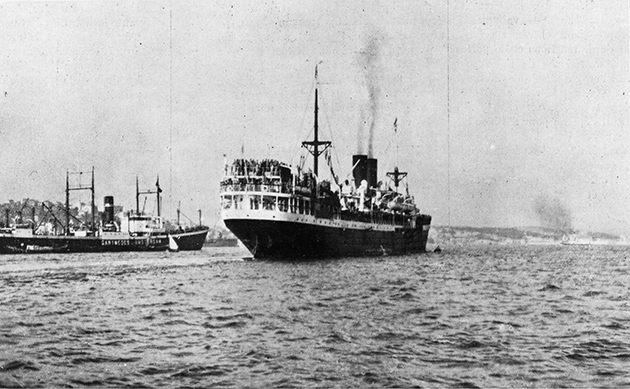The Franco-Turkish conflict in Cilicia
Sous-titre
1920-1921
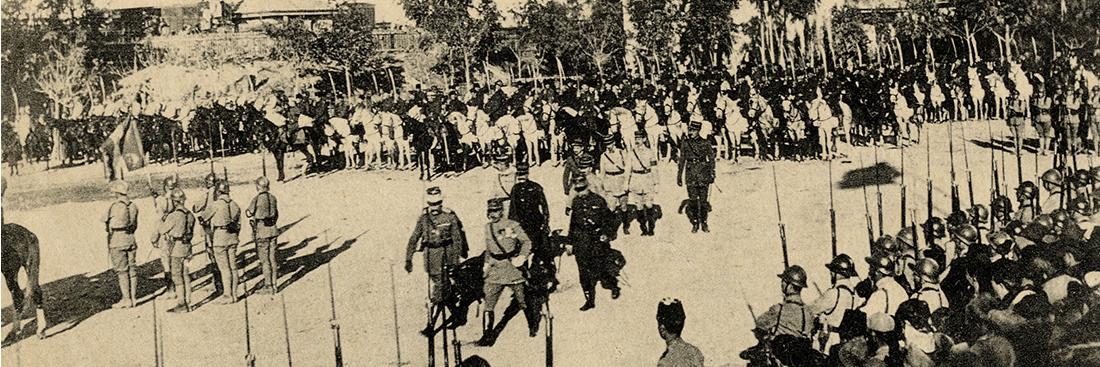
Following the First World War, France, anxious to extend its influence in the Middle East, obtained a League of Nations mandate for part of Cilicia, a region of southern Turkey.
By the time the First World War was over, a series of agreements had already been drawn up between the Allies concerning the future of the Ottoman Empire and how the different areas of influence should be shared out.
The Sykes-Picot Agreement, of 16 May 1916, divided the Arab countries into French and British zones, extending France’s Syrian protectorate into Cilicia.
The following year, with the Agreement of Saint-Jean-de-Maurienne, the Allies recognised Italy’s authority over southern Anatolia (the Antalya region) and the region of Smyrna, with their majority Greek population. However, in 1918-19, Great Britain secured for the Greek government of Elefthérios Venizélos the right to “temporarily” occupy Smyrna, on the grounds that Russia had been unable to give its assent to the agreement as planned, because of the Russian Revolution.
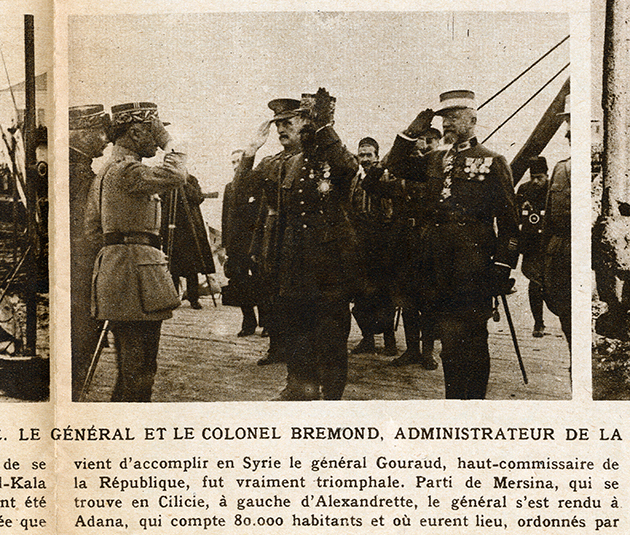
General Gouraud, High Commissioner of the Republic, is received by Colonel Brémond, Chief Administrator of Cilicia, Adana, 1919. © Service Historique de la Défense
In February 1920, the Conference of London sanctioned the dismantling of the Ottoman Empire and confirmed the existence of French, Greek and Italian zones in Anatolia. The capital, Constantinople, occupied in March by the British contingent of an inter-Allied force, tasked with ensuring freedom of movement in the straits, remained nonetheless under Ottoman sovereignty.
Two months later, the Conference of San Remo completed the provisions adopted in London by the Allies, in respect of Anatolia and Thrace. Eastern Thrace was annexed by Greece. The straits were demilitarised under inter-Allied supervision. Owing to the United States’ rejection of any mandate in Constantinople and Turkish Armenia, the Armenian Republic was given the provinces of eastern Anatolia bordering it, Kurdistan was made an autonomous state and, in the part of Anatolia that remained Turkish, Greece and France shared out the zones of influence.
At the Spa Conference the following July, the Allies rejected Constantinople’s counter-proposals concerning the provinces awarded to Armenia and the French mandate in Cilicia.
All of the provisions adopted by the Allies were set out in the Treaty of Sèvres, which considerably reduced the Turkish Empire. The treaty was signed by the legal government of the Sultan of Constantinople. Yet, since the end of 1919, he held absolutely no power in Asia Minor.
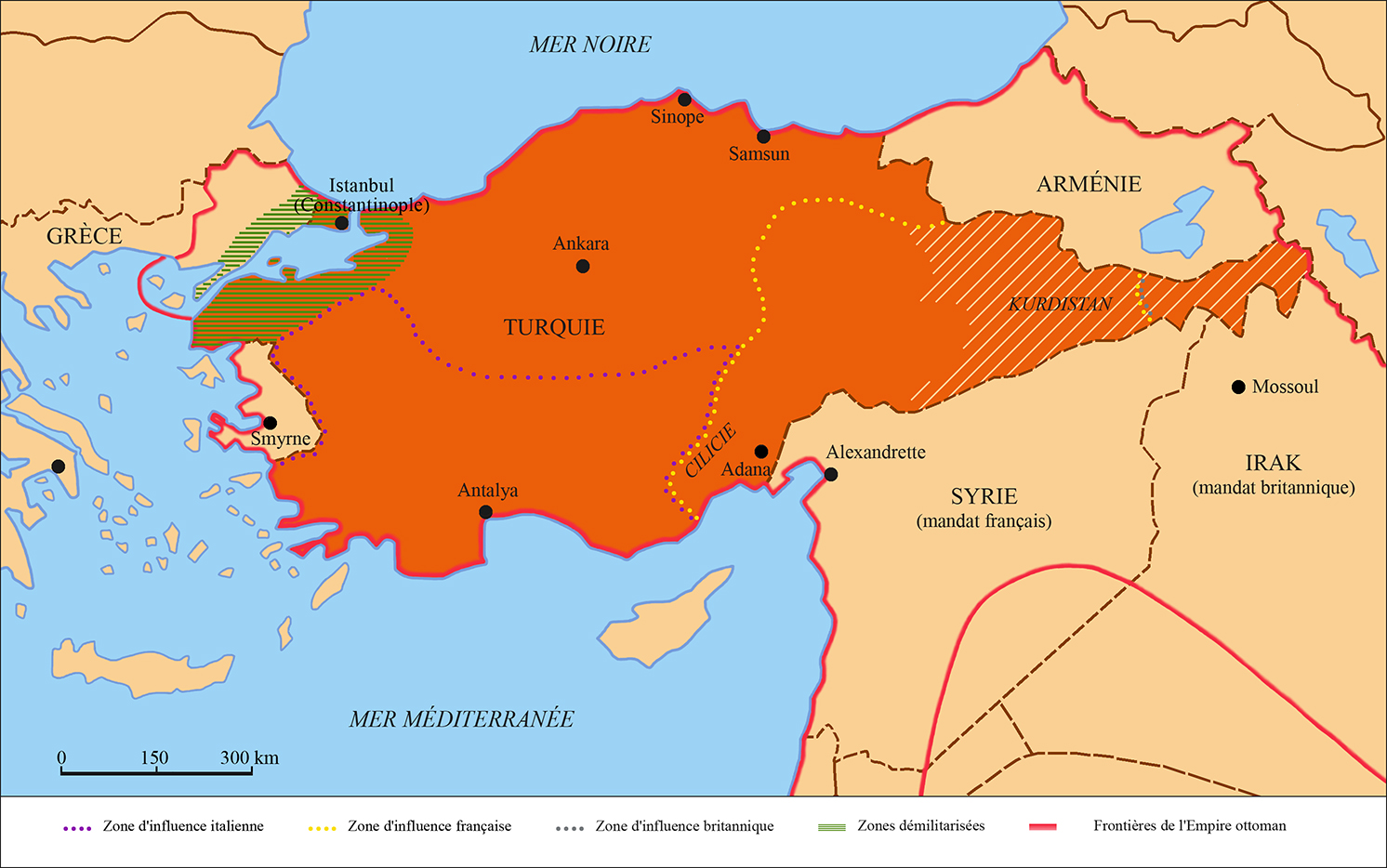
Turkey under the Treaty of Sèvres (10 August 1920). © MINDEF/SGA/DPMA/Joëlle Rosello
Indeed, General Mustafa Kemal had refused to demobilise the Anatolian units after Greek troops landed in Smyrna in June. The Congresses of Erzeroum and Sivas, which he called on his own authority, made him the head of the nationalist resistance.
Following the occupation of Constantinople by British troops, the Chamber of Deputies was dissolved in March 1920. The Grand National Assembly, convened in Ankara by Kemal, suspended the Sultan’s powers, giving full powers to the government presided over by Kemal. After the signing of the Treaty of Sèvres, the Ankara government announced the Sultan’s deposition.
Stripped of the Empire’s former Balkan and Arab possessions, the Turkish nationalists sought to preserve the integrity of “national territory”, comprised of the whole of Anatolia and Eastern Thrace.
To that end, they endeavoured to take back the areas under foreign occupation, regardless of the minorities inhabiting them; drive the Greeks – both continental troops and native populations – back across the 1914 Greece-Turkey border; and take back Turkey’s Armenian provinces, including those handed over to Turkey under the Treaty of Brest-Litovsk (3 March 1918), then annexed by the young Armenian Republic with the fall of the Ottoman Empire in 1918-19 (Kars and Ardahan).
The fighting waged by Kemalist troops and partisans was a mixture of strategic operations by the regular army and tactical guerrilla actions and raids. This all-out war was at the same time a war of extermination of the ethnic minorities in Anatolia: Greeks in the west, Armenians in the east.
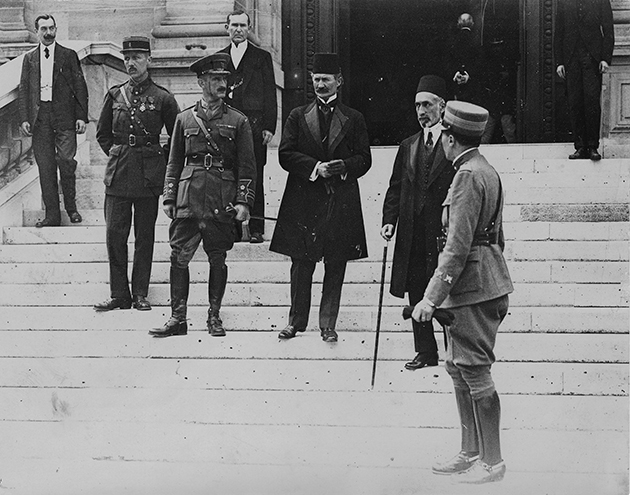
Turkish mission to Paris, March 1921. © Service Historique de la Défense
Military operations were carried out on three fronts.
In the west, following the initial Turkish attacks, the Greeks went on the offensive in June 1920. Despite a setback at Inönu, they held the upper hand until summer 1921, when the Greek offensive was broken by Mustafa Kemal himself, appointed supreme commander, at the Battle of Sakarya, in August-September 1921. On 30 August 1922, the Turks won a decisive victory at Dumlupinar, Smyrna was taken and the Greek population massacred. On 11 October, the Armistice of Mudanya gave the Kemalist government the whole of Anatolia and Constantinople. The Sultan was officially deposed and forced to leave Constantinople.
In the east, with both moral and material support from the Soviet Union, itself concerned with recovering the Republic of Azerbaijan, Turkey recaptured Kars (3 October 1920) and Andrinopol (7 November 1920). On 2 December, just three months after the outbreak of hostilities, an armistice was signed. It renewed the clauses of the Treaty of Brest-Litovsk, establishing an autonomous Tatar state on Armenian territory, and left the clauses of the Treaty of Sèvres without effect.
In the south, Turkish troops entered Cilicia and the territory of Antalya in early 1920 and carried out devastating raids.
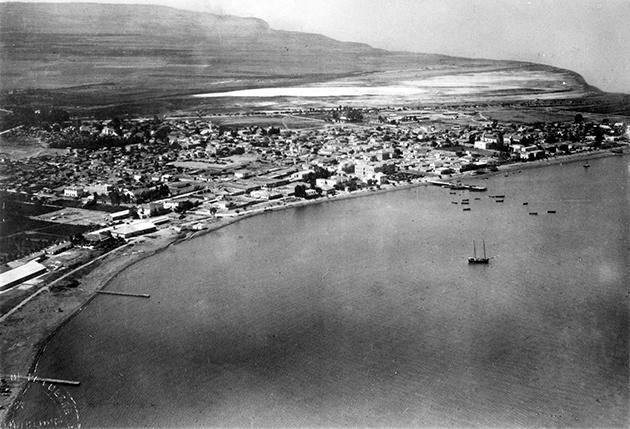
Alexandrette © Service historique de la défense
The League of Nations mandate did not encompass the whole of Cilicia; its eastern part remained in Turkish hands. The majority Armenian population welcomed the French mandate, which would guarantee the existence of a small, autonomous Armenian state in Cilicia. In a context of exasperation among Turkish and Armenian nationalists, this situation brought a number of consequences. Until the summer of 1920, Cilicia became a centre for the spread of expansionist propaganda aimed at creating a vast Armenian state stretching from Transcaucasia to Central Anatolia. That propaganda pandered to the exterminatory desires of nationalist troops, who first of all turned against the Armenian enclave in Cilicia, fighting a number of battles against French troops. From September 1920 onwards, when the offensive was launched against Armenia, Cilicia became a place of refuge for Armenians fleeing eastern Anatolia.
Barely had fighting begun against the Kemalist troops than the French government and the government of Mustafa Kemal, installed in Ankara, signed an armistice, on 30 May 1920.
Even so, scuffles went on between French and Turkish troops, at the same time as the negotiations with the Ankara government.
On 30 October 1921, France renounced its mandate in Cilicia, keeping only the Sanjak of Alexandretta, on the Syrian border. Meanwhile, the Italians gave up the territory of Antalya, in exchange for mining concessions in the region..
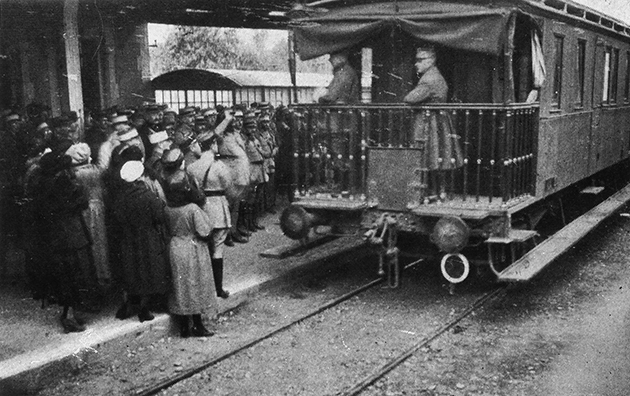
General Dufieux, Adana, 24 November 1921. © Service Historique de la Défense
In 1922, the French government offered to mediate in the Greco-Turkish War, and contributed to the signing, on 11 October, of the Armistice of Mudanya, which sanctioned the withdrawal of the Allied powers from Turkey.
With the 1922 armistice and the fall of Lloyd George’s cabinet, the last obstacles to a revision of the Treaty of Sèvres were removed.
Under the Treaty of Lausanne, the Allies abandoned the Armenian and Greek claims. France renounced once and for all its pledge to safeguard the establishment of an Armenian state in Cilicia. Turkish sovereignty over the whole of its national territory was recognised. Turkey guaranteed freedom of movement through the straits.
